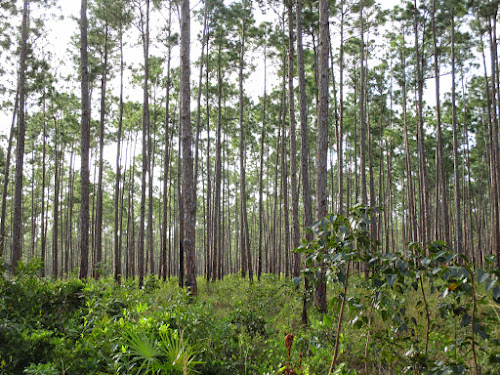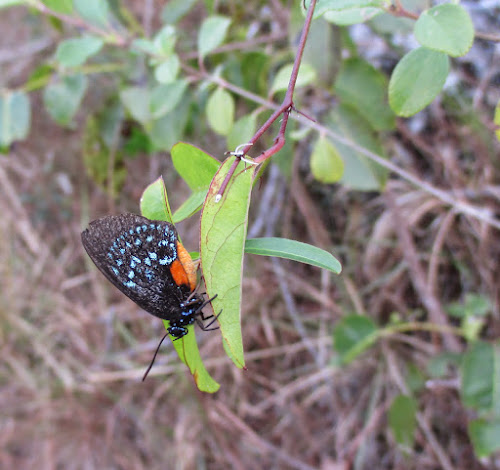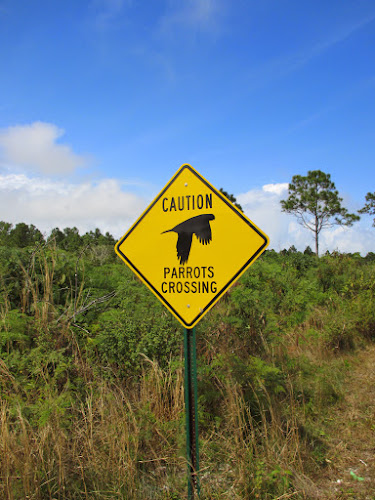February 28: Abaco National Park
Kristen Lindquist
Headed out early today in order to spend time in southern Abaco at the big national park created there to protect habitat of the Bahama Parrot, a subspecies of the Cuban Parrot of which there between 3,000 - 5,000 birds remaining on Abaco (8,000 - 13,000 are estimated on Great Inaugua Island). Began our day enjoying a Bahama specialty treat, guava duff, on a beach in the little town of Sandy Point, then headed into the park on foot to enjoy Bahama specialty birds. The open pine forests were hot but birdy, and we found three more of the five Bahama endemics: Bahama Yellowthroat, Bahama Warbler, and Bahama Woodstar (a hummingbird), in addition to other area highlights: Cuban Pewee, Olive-capped Warbler, Cuban Emerald (another hummingbird), and Bahama Mockingbird. And the air was filled with pretty little Atala butterflies. But no parrots.
Our outdated bird guide suggested another stop outside the park at a bonefishing camp, but the camp had clearly given up the ghost many years ago. Junked cars and dilapidated buildings were overgrown by vegetation, looking not just abandoned but pillaged. A careful walk through on creaky walkways gave me the creeps. And yielded no new birds.
One last stop on the way back to Marsh Harbour, however, brought us our parrots. We came upon a flock of a couple dozen or so foraging in roadside fruit trees. These large, loud green birds with white and pink heads seemed to have little fear of us as we stood below gawking and taking pictures. They're the first wild parrots I've ever seen--and what's cool is that they're a truly wild parrot here, not a population established from escaped birds as are all the parrots in the US. What's also cool is that these birds nest in limestone caves--this explains their scarcity; the Inaguan population has adapted to nesting in trees and avoids predators more easily.
Blues I carry with me:
this turquoise ocean,
shimmer of a parrot's wings.
 |
| Abaco National Park |
 |
| Atala |
 |
| Crossing Rocks beach |
 |
| Abaco National Park |
 |
| Bahama Parrot |
